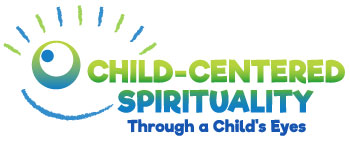I watch my grandchildren regularly while their parents are working. One day I drove them and their friends on a day trip to a nearby town. It was supposed to be a fun trip, but the car was full and noisy.
One of my grandchildren in particular was acting up and arguing about some small point. After several back-and-forth exchanges, I lost my temper and yelled at the child. Suddenly, the whole car was silent.
Sound familiar? This grandfather realized he messed up. It is an almost universal aspiration for children and adults–even grandfathers–to recognize that we have certain weaknesses, flaws or character defects we want to change.
And what did this grandfather do?
I pulled over to the side of the road and turned around to apologize. I explained how sometimes I lose my temper and shouldn’t have responded like that. I talked about a few ways I’m trying to work on changing this.
Later I heard that this incident made a big impression on one of the grandchild’s friends. He’d never heard an adult apologize to a child before, especially without blaming the child for the anger.
6 SPECIFIC IDEAS TO FACE DOWN FLAWS:
1. Admit my weaknesses.
I am able to admit my mistakes and weaknesses in the child’s presence. I speak of my willing attitude to open myself up to God for help in overcoming.
2. Put my strengths to work.
Since I know my own talents, strengths and skills, I am able to speak freely to the child about using my strengths, together with God’s, to accomplish much.
3. Think, reflect, analyze.
I encourage time for my own reflection on great teachings and spiritual experiences, and I talk to the child about the degree to which I’ve allowed them to transform my inner life.
4. Illustrate life lessons through storytelling.
I use my memories and stories to explain life lessons to the child, yet recognizing that their experiences will be different.
5. Evaluate and change my flaws.
I set aside regular times of reflection upon my activities and use of my personal assets (money, time, energy), considering their effectiveness. I speak to the child about what I need to change and how I plan to go about it.
6. Notice positive changes and say so.
I comment on positive changes I notice in the child by describing, not judging, his or her journey of growth.
The ideas above are built on the foundational assumption that you yourself are also engaged in a journey of personal transformation.
In which of the points above do you engage regularly? Which do you need to be more intentional about? What responses have you seen in children when you practiced these behaviors?
TWEETABLE: As children develop a conscience; many want the help offered here to change bad behavior. Click to Tweet
